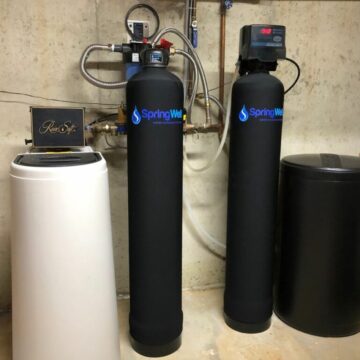Acid staining is a concrete finishing method that combines metallic ions that are acid-soluble with water and hydrochloric acid. This combination penetrates the concrete and interacts chemically with the hydrated lime. The metallic salts can more easily permeate the concrete surface because of the stain’s little surface erosion. When the stain reacts, it permanently fuses with the concrete surface.
Any floor surface should have a finishing treatment to prolong its life, and stained concrete floors are no exception. Let us look at the perks of acid-stained concrete flooring.
Durability
Although concrete has a compressive strength of more than 4,500 pounds per square inch, surfaces exposed to heavy foot and machine activity are more prone to various possible hazards. For instance, scratches, cracks, and occasionally warping or buckling are all too prevalent due to the material’s porousness.
However, an acid-stained concrete floor is protected from this and is much less likely to peel, chip, discolor, and fade. Although moisture is prevalent on most surfaces, acid-stain concrete doesn’t suffer because the finish is water-based. The added protection against water infiltration significantly decreases mold and mildew formation on the surface.
Little upkeep
Acid-stained concrete floors protect against impact damage and are incredibly simple to maintain. The floor will only need to be swept and mopped to remove dirt and debris, and the staining procedure ensures that it won’t crack or grow mold from standing water from mopping or scratches from a broom.
While carpets can eventually dissipate, stains on a concrete floor will not dissolve over time. If necessary, a quick polish will restore it to its previous splendor. This finishing choice is excellent for restaurants and healthcare facilities since you can easily wipe off spillage.
Fire Resistance
A floor that is fire resistant is beneficial for commercial and industrial settings and can save lives in some circumstances. A stained concrete floor can be crucial in a building’s passive fire resistance setup. This is especially significant for factories that employ many flammable materials like oils or wood and spark-creating machinery.
Energy efficiency
Increasing overall levels of heat insulation is usually the key to improving energy efficiency in buildings, and staining or coating a concrete floor can help you do that.
Concrete is typically considered a “cold” flooring material; however, in some settings, its capacity to gently absorb heat or coldness and release it makes it more energy-efficient than other floors. A stained concrete floor increases this “thermal mass” even more, which minimizes the need for HVAC equipment.
Aesthetics
Concrete may be built to match any décor, despite not traditionally being chosen for its visual appeal. While typically used in an industrial setting, many people turn to concrete flooring in their homes as a distinctive and eye-catching interior design feature, particularly in bathrooms and kitchens.
An acid-stained concrete floor is a more versatile option to match your current décor and may be changed suitably in the future because it can be painted or decorated much more readily than other surfaces. There are also ways to use stained concrete to more inexpensively and sustainably imitate various stone-based flooring materials, like granite, cobblestones, sandstone, and more.
















